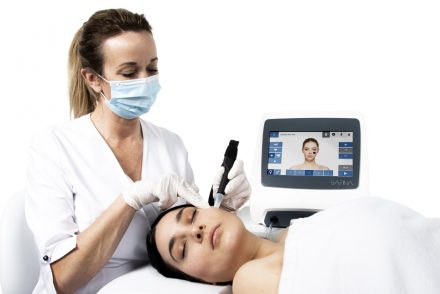As we enter the harshest months of winter, it’s easy to forget the importance of continuing to protect our skin. And yet, this season brings significant challenges for the epidermis. Although the sun seems less present, UV rays persist, and can still cause skin damage. What’s more, temperature variations, dry air from indoor heating and cold winds all contribute to drying out our skin. It’s essential to understand that winter requires special attention to keep our skin healthy. This blog will explore the importance of protecting the skin barrier in winter, while addressing other winter challenges that impact the skin and how to better preserve it.
During winter, the importance of skin protection is often underestimated, as it is usually associated with summer. Nevertheless, despite the reduction in sun exposure and sunshine hours, the sun’s harmful effects are still present and continue to affect the skin. The risks of skin cancer, dark spots and premature aging persist even during winter, justifying the continued use of a protective cream.
Exposure to ultraviolet rays is generally highest in spring and summer, when the sun is positioned at a higher angle, intensifying the UV index. However, sun exposure still has an impact on the skin during the cold season. In winter, around 80% of UV rays are reflected by the snow, as opposed to 25% by the water and 10% by the ground in summer. Winter sports, in particular, represent significant challenges for the epidermis, as the skin is not only exposed to the sun’s direct rays, but also to reflected rays which double the UV factor, thus presenting an increased risk to exposed skin.
The UV index shows the need to protect the skin at all times, even on cloudy days. Most weather applications display the UV index for your region. As soon as the it reaches level 3, it’s advisable to reapply a protective cream every two hours. This is the key to success. However, for UV indexes below 3, we recommend the application of a city filter. What’s more, at higher altitudes, each 300-meter increment means a 4-5% increase in UV exposure, thereby increasing the risk of skin damage.
In wintertime, with shorter days and less outdoor exposure, melanocytes are less solicited, producing less melanin. This makes the epidermis less resistant to external aggression and more vulnerable to UV rays. Melanocytes are pigments that protect against UV rays and help maintain the skin’s water balance. It is therefore essential to continue protecting and moisturizing the skin, especially during this season.
As the cold season sets in, temperatures drop, and sudden, extreme temperature variations become common. The air becomes drier, and cold winds prevail. Simultaneously, excessive use of indoor heating, both at home and in transport, and extended hot showers all contribute to drying out the skin. Moreover, the drop in temperatures during winter affects our blood circulation. Blood vessels constrict, and skin cells regenerate at a slower pace. Consequently, our epidermis becomes less resistant to external aggressors, making it more vulnerable. This results in dry skin, redness, and other skin reactions. Therefore, it’s particularly important to bolster the skin’s hydrolipidic film. To achieve this, we recommend the application of highly moisturizing creams and nourishing products.
Vital allies during the cold season often include oils to properly nourish the skin. The Elixa Smoothing Oil from Action de Gala comes highly recommended. Just a few drops are sufficient to adequately nourish the skin without leaving an oily residue. Our top pick for nourishing and protective winter care is undoubtedly Hydramass. Versatile and with a rich texture, this massage cream can cloak your facial skin like a protective barrier. Additionally, for year-round protection, using a cream like Ombracrème containing zinc oxide is strongly advised. Its anti-inflammatory properties act as a shield against external aggressors. Apply it with gentle tapping motions over your day cream, warming it up in your hands beforehand.
It’s important to acknowledge the challenges that skin faces during the winter season. UV rays, although less conspicuous, continue to represent a constant risk to skin health. Likewise, harsh weather conditions and dry air contribute to weakening the skin. Therefore, maintaining adequate protection and appropriate skin care are essential measures for preserving the skin’s vitality and health, even in the midst of the coldest months of the year.







No Comments